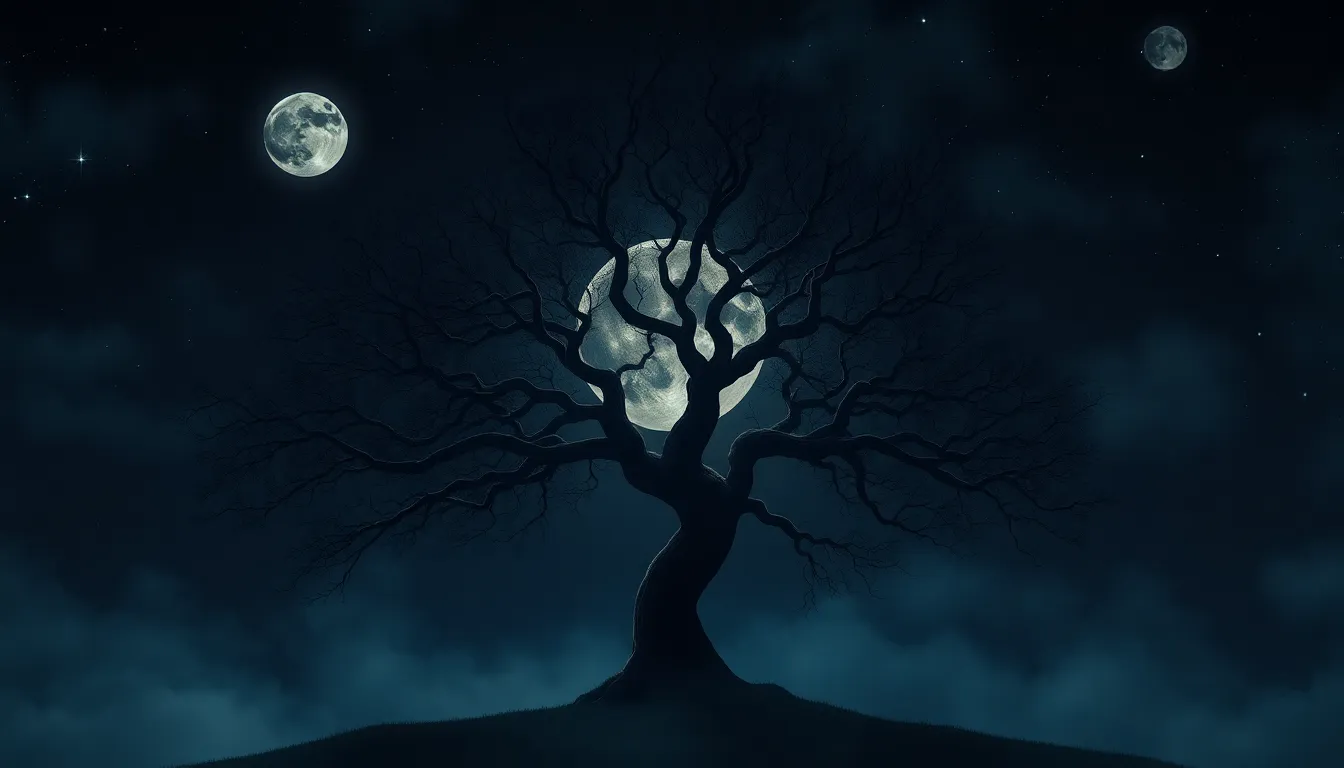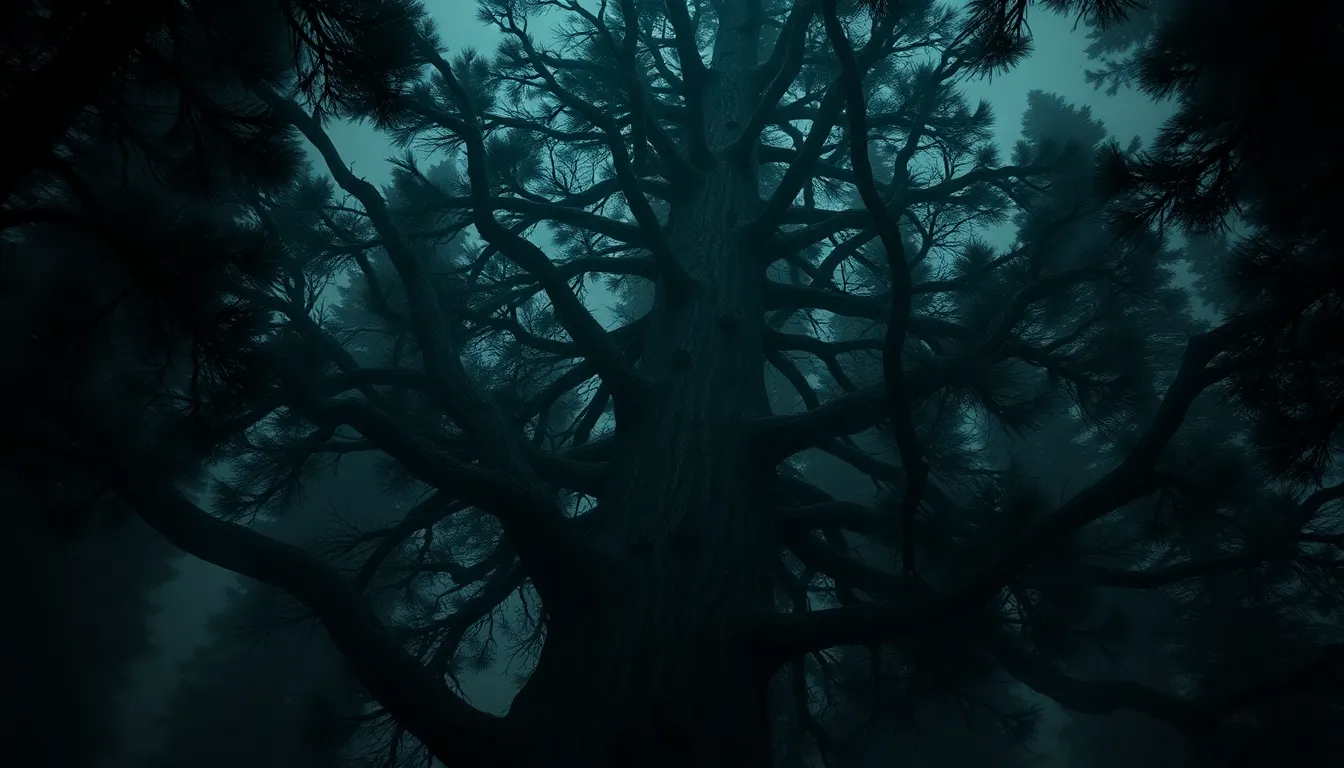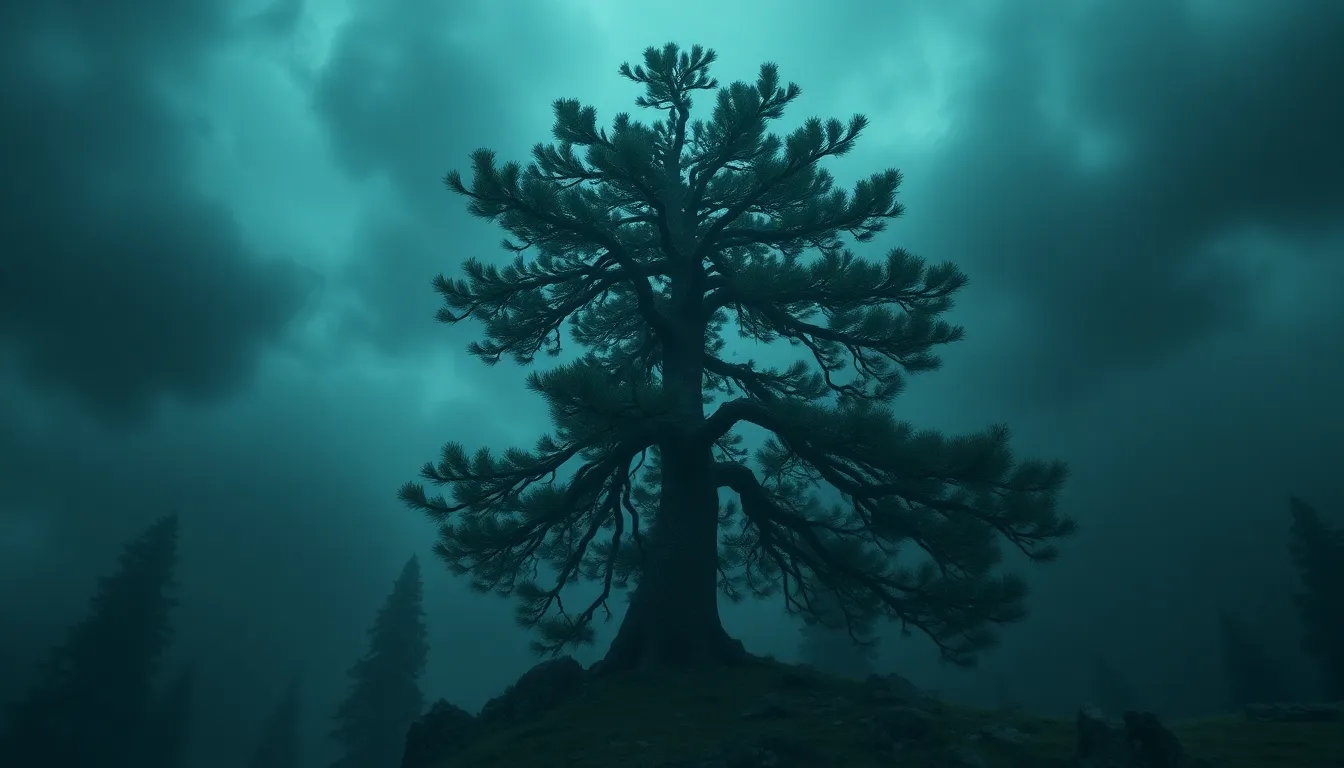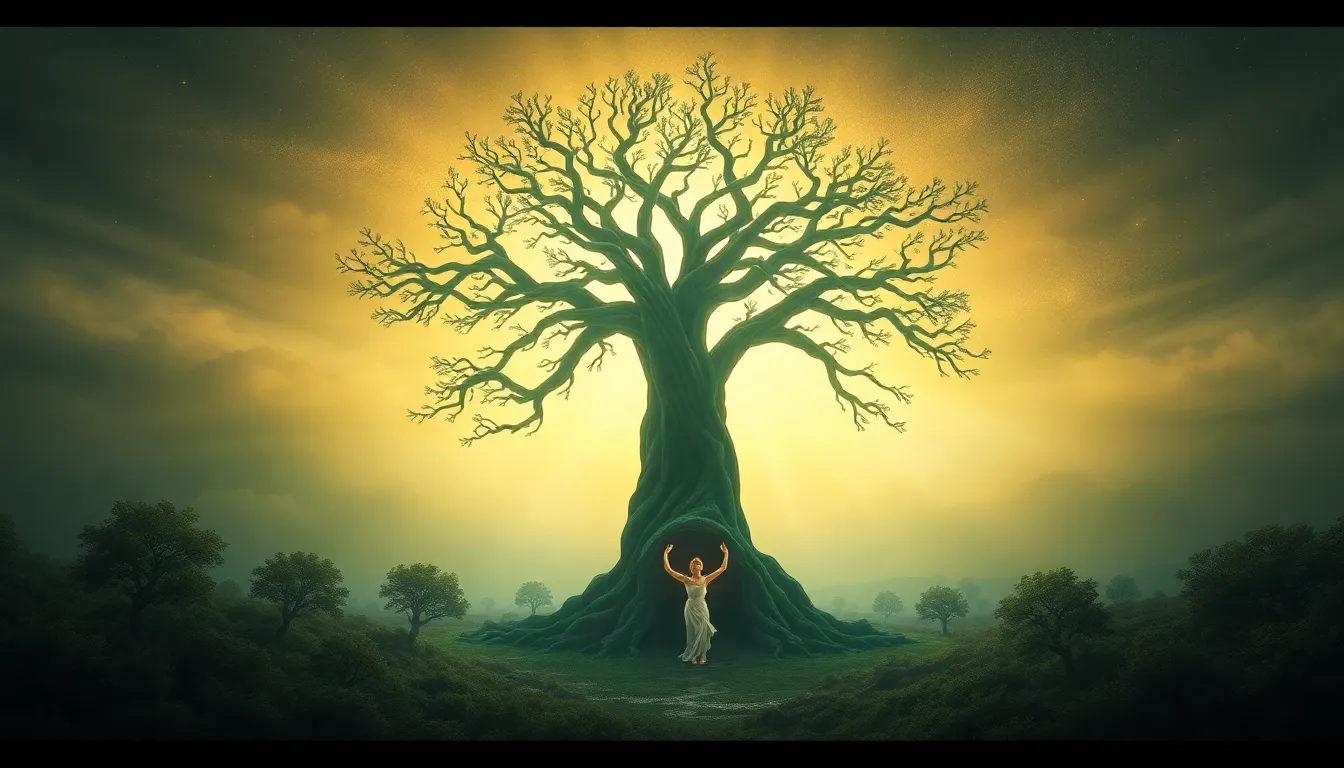The Tree of the Moon: Myths of Night and Mystery
I. Introduction
The concept of the Tree of the Moon intertwines the ethereal beauty of the moon with the rooted strength of trees. This mystical tree is often seen as a symbol of wisdom, connection, and the mysteries of the night. Throughout history, the night and its accompanying mysteries have held a significant place in various cultures, inspiring myths and legends that reflect the human experience and understanding of the cosmos.
In this article, we will explore the rich tapestry of myths associated with the Tree of the Moon, examining its symbolism, cultural significance, and the various stories that have emerged over time.
II. The Symbolism of the Moon in Mythology
The moon has been a powerful symbol throughout human history, often representing femininity, intuition, and the subconscious. Its phases, from the new moon to the full moon, signify various aspects of life, growth, and transformation.
A. The moon as a symbol of femininity and intuition
The moon is frequently associated with feminine qualities, embodying the cyclical nature of life. Many cultures view the moon as a goddess, reflecting the nurturing and intuitive aspects of femininity. This connection is evident in:
- The Greek goddess Selene
- The Roman goddess Luna
- The Hindu goddess Chandra
B. Cultural variations in lunar symbolism
Different cultures have their unique interpretations of the moon, influencing their myths and practices. For instance:
- In Chinese mythology, the moon is associated with Chang’e, the Moon Goddess, who represents beauty and immortality.
- In Native American cultures, the moon is often viewed as a guide, influencing hunting and agricultural practices.
C. Connection between the moon and nature
The moon’s gravitational pull affects tides and has been linked to agricultural cycles, further embedding it in the natural world. Many cultures have developed calendars based on lunar cycles, reflecting the moon’s integral role in daily life.
III. The Tree of Life and the Tree of the Moon: A Comparative Analysis
The Tree of Life and the Tree of the Moon are two archetypal symbols that represent different aspects of existence. While they share similarities, they each have distinct characteristics.
A. Definitions and characteristics of the Tree of Life
The Tree of Life symbolizes interconnectedness, growth, and the cycle of life. It often represents the connection between heaven, earth, and the underworld, serving as a bridge between different realms.
B. Differences and similarities between the two concepts
While both trees symbolize life and growth, the Tree of the Moon emphasizes the mysteries of the night, intuition, and the feminine experience, whereas the Tree of Life focuses on the broader spectrum of existence and universal connections.
C. The Tree of the Moon as a unique cultural archetype
The Tree of the Moon stands out as a cultural archetype that captures the essence of lunar myths, linking night, mystery, and the subconscious in a way that resonates with many spiritual practices.
IV. Celestial Trees in Global Mythology
Across various cultures, celestial trees serve as important symbols in mythology, representing the connection between the earth and the heavens.
A. Overview of celestial trees across different cultures
Many cultures have their interpretations of celestial trees, each holding significance in their respective mythologies. Notable examples include:
- The Norse Yggdrasil, a massive tree connecting the nine worlds
- The World Tree in Indigenous American myths, representing the axis mundi
B. The Norse Yggdrasil: The World Tree
Yggdrasil is a central figure in Norse mythology, often depicted as an enormous ash tree that connects all realms of existence. It is a source of life, wisdom, and a place of gathering for gods and mortals alike.
C. The World Tree in Indigenous American myths
In many Indigenous American cultures, the World Tree is seen as a life-giving force that connects the sky, earth, and underworld. It often appears in creation myths and is revered as a sacred symbol.
V. Legends of the Tree of the Moon
The Tree of the Moon features prominently in various legends and stories that reveal the importance of the moon in different cultures.
A. Origin stories from various cultures
Many cultures have origin stories that involve the Tree of the Moon, often explaining how the moon came to be or its significance to humanity.
B. Notable figures associated with the Tree of the Moon
Myths often feature key figures connected to the Tree of the Moon, such as:
- Selene in Greek mythology
- Chandra in Hindu tradition
C. The role of the Tree in celestial navigation and calendars
The Tree of the Moon has historically played a role in celestial navigation and the creation of lunar calendars, guiding people through the cycles of time.
VI. The Tree of the Moon in Literature and Art
Throughout history, the Tree of the Moon has inspired countless works of literature and art, serving as a powerful symbol of mystery and beauty.
A. Depictions of the Tree of the Moon in poetry and prose
Poets and writers have often drawn on the imagery of the Tree of the Moon to convey themes of love, longing, and the passage of time. Its portrayal varies, from a serene, guiding presence to a haunting symbol of the unknown.
B. Artistic representations and interpretations
The Tree of the Moon has also inspired artists, leading to diverse interpretations that capture its ethereal qualities. Artists utilize various mediums, from painting to sculpture, to explore the tree’s symbolism.
C. The influence of the Tree of the Moon on contemporary art
In contemporary art, the Tree of the Moon continues to resonate, inspiring new generations of artists to explore themes of nature, spirituality, and the cosmos.
VII. Nighttime Rituals and the Tree of the Moon
Many cultures incorporate the Tree of the Moon into nighttime rituals, celebrating its significance during various lunar phases.
A. Ritual practices associated with lunar cycles
Rituals often align with the phases of the moon, with celebrations during the full moon being particularly common, as this is seen as a time of abundance and illumination.
B. Symbolism of the Tree in nocturnal celebrations
The Tree of the Moon symbolizes growth and potential, making it a focal point during nocturnal celebrations that honor the mysteries of the night.
C. The significance of the moon in spiritual journeys
The moon often serves as a guide in spiritual journeys, with the Tree of the Moon representing the connection between the individual and the cosmos.
VIII. The Tree of the Moon in Folklore and Oral Traditions
Storytelling practices surrounding the Tree of the Moon have preserved its myths and significance through generations.
A. Storytelling practices surrounding the Tree of the Moon
Oral traditions have kept the stories of the Tree of the Moon alive, passing them down through storytelling sessions, rituals, and gatherings.
B. The role of the Tree in folk tales and myths
In many folk tales, the Tree of the Moon plays a crucial role, often representing a gateway to other worlds or a source of wisdom and guidance.
C. Preservation of the Tree’s stories through generations
The continued oral tradition ensures that the stories surrounding the Tree of the Moon remain vibrant and relevant, adapting to contemporary contexts while retaining their core themes.
IX. Modern Interpretations and Cultural Relevance
In modern spirituality and cultural movements, the Tree of the Moon has found new relevance, symbolizing both environmental consciousness and personal growth.
A. The Tree of the Moon in modern spirituality and neo-paganism
Contemporary spiritual practices often incorporate the Tree of the Moon, using its symbolism to connect with lunar energies and the cycles of nature.
B. Environmental symbolism and conservation efforts
The Tree of the Moon also embodies environmental themes, inspiring conservation efforts that aim to protect natural ecosystems and promote sustainability.




